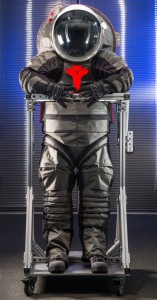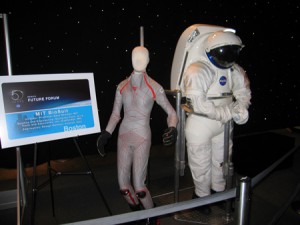Clothing on Mars is not the same as clothing on Earth, wearing a t-shirt when it’s warm and a jacket when it’s cold won’t keep you alive on Mars. There are many problems that humans face when worrying about what to wear on Mars.
Some of the problems are:
- The air pressure on mars is too thin to breathe
- The too much carbon dioxide and too little oxygen for humans
- The temperatures vary from 27C (81F) to -133C (-215F) were suggested using thermal mapper
- The gravitational force on Mars is about 1/3rd the gravitational force of earth so radiation from space would heavily affect the atmosphere in Mars
- There are also small meteorites that crash the surface of the red planet which can put force on humans walking nearby and sometimes blast them if the explosion is strong enough
- Mars has storms that consist of small meteors and harsh debris.
- Despite the lack of gravity, humans will also need to move around on Mars as well as perform work on structures as well as explore the planet so we need a mobile suit unlike the ones on Apollo and the Space Station which only allow the astronauts to hop instead of walk.
Solutions

NASA’s Z-2 SpaceSuit Prototype
There are two space suits which are designed to solve the problems that we face concerning what to wear on Mars. There is also a third suit which was only developed in a class room but never saw any real work done on it due to the extremely high cost of the suit. According to N.A.S.A and BBC news the Z-2 space suit was the elected space suit for Mars missions after being put to popular vote winning “63% of a public vote of 233, 431.” It beat the “bio-mimicry suit which mirrored the bio-luminescence of aquatic creatures and the tough scaly skins of fish and reptiles.” It also came above the “trend in society suit which reflected what everyday clothes may look like in the future.” So what is it exactly that made this suit more suitable than the others and how does it plan to solve the problems we have to deal with when we are on Mars? Well the Z-2 Space suit was designed will a solution to all those problems. It is very mobile compared to the suits used on the Apollo missions and is made for walking both on the surface of Mars and in space. It has adjustable shoulder and legs to support better movements from the astronauts. The upper torso of the suit is hard to protect the astronauts from any hits or falls they may take. The helmets are bubble shaped to allow for a wide viewing so to help the astronauts explore. The Z-2 suit will also feature an electroluminescent lighting similar to the popular movie “Tron” which can change based on the astronauts so to help identify the astronauts. It will also monitor the air inside of the suit and provide oxygen as well as filter out bad gasses to the outside. The Z-2 has its own temperature regulation mechanism to keep the temperature of the suit stable.
Secondly we have the Dava Newman’s BioSuit which is of course designed by Dava Newman. This suit is entirely different from the Z-2 not only because of the name but also the design and the way it aims at solving the problems we face. One main concern is maintaining the same pressure that is on Earth which the Z-2 provides always keeping the suit pressured with different gasses as one would fill a balloon up. The BioSuit solves this issue by being very tight and stretchy and applying the pressure mechanically ithout the use of gases like the Z-2 does. This design not only solves the issue of the keeping an atmospheric pressure similar to Earth but also allows astronauts more mobility for exploration. The fabric is lightweight and is not bulky as the Z-2 so astronauts can move easier and still be protected. It is made of a mixture of different polymers such as nylon and spandex so it is also cheaper to produce than the Z-2. The suit is also very protective because of the tight material and fit, any tear or damages done to the suit will only cause the loss of pressure to the area that is torn and not to the astronaut’s entire body. The helmet is similarly shaped to the bubble design and the atmosphere designed inside the suit stays the same until the entire suit is opened. There is still more being developed about this suit in regards to regulating the oxygen as well as the temperature of the suit. The Z-2 is also just a prototype and is not yet flight ready but is being heavily tested by NASA in conditions similar to those on Mars.




